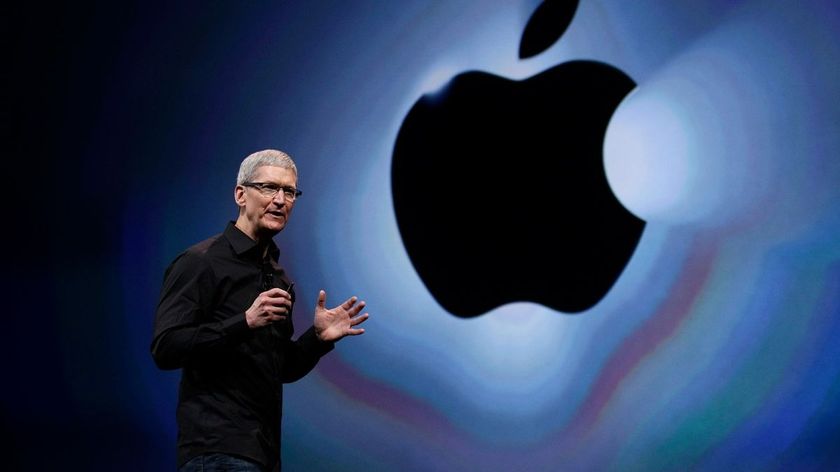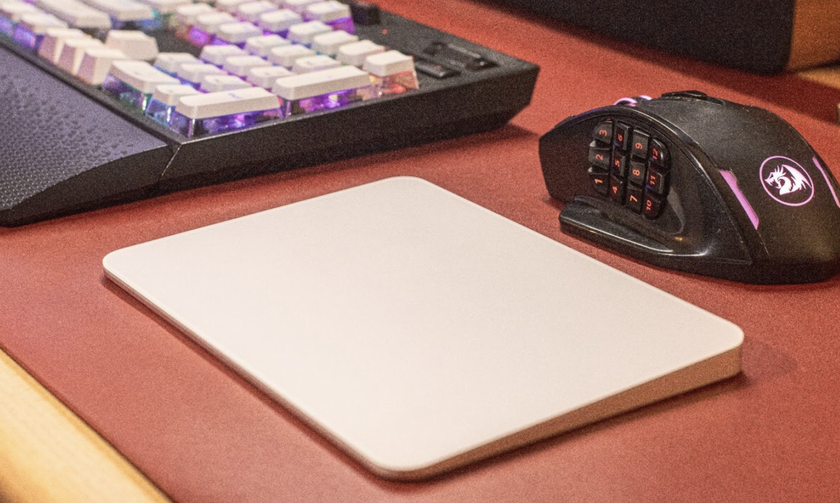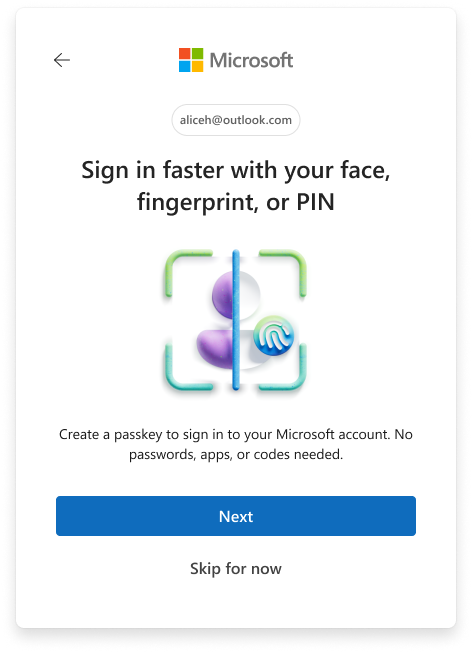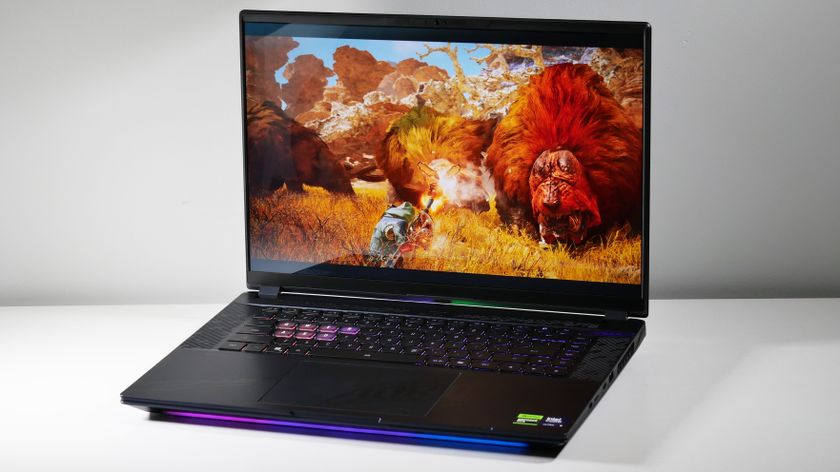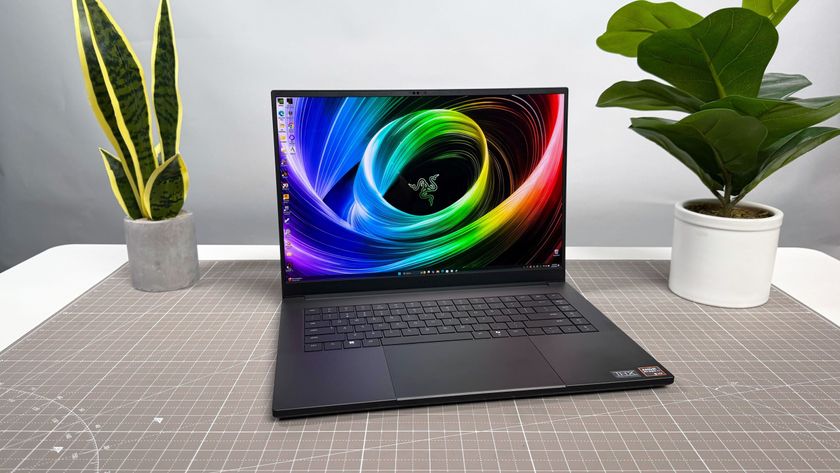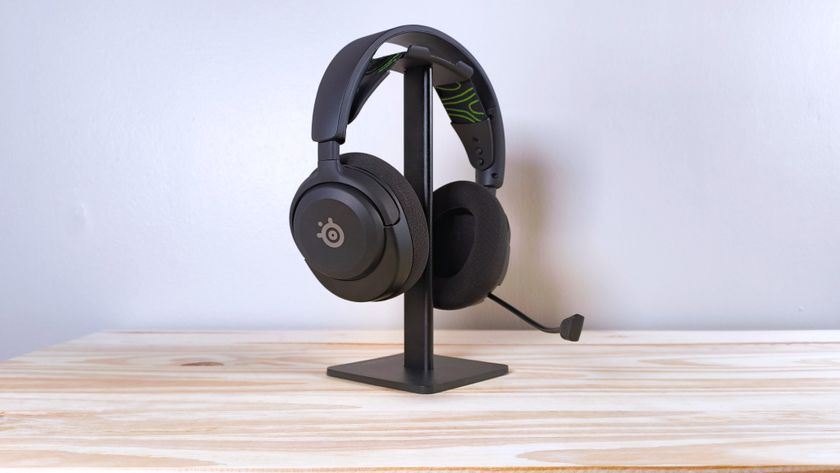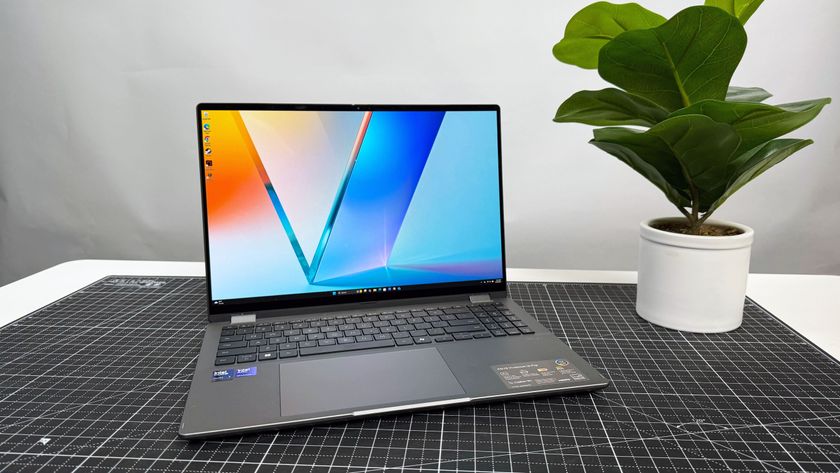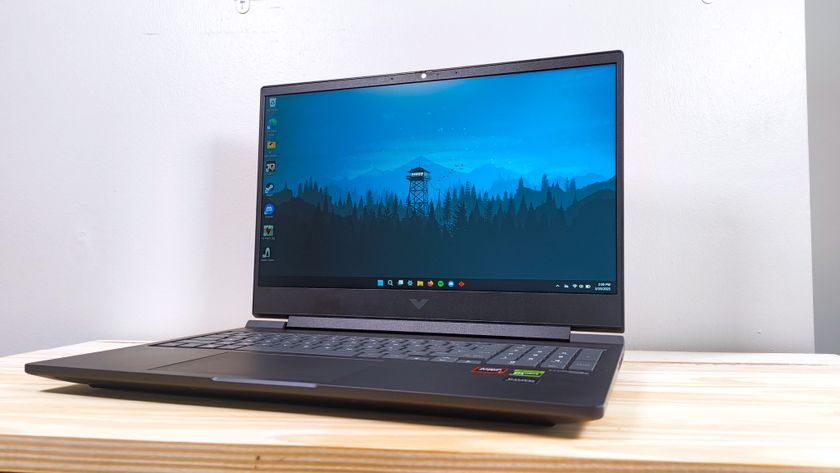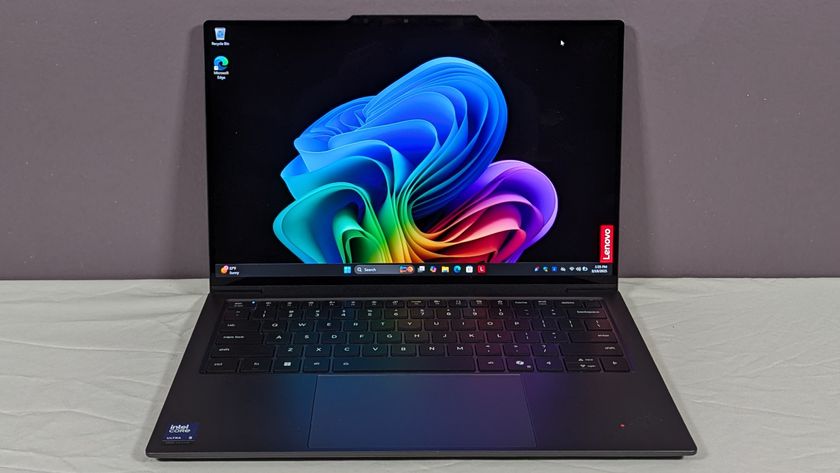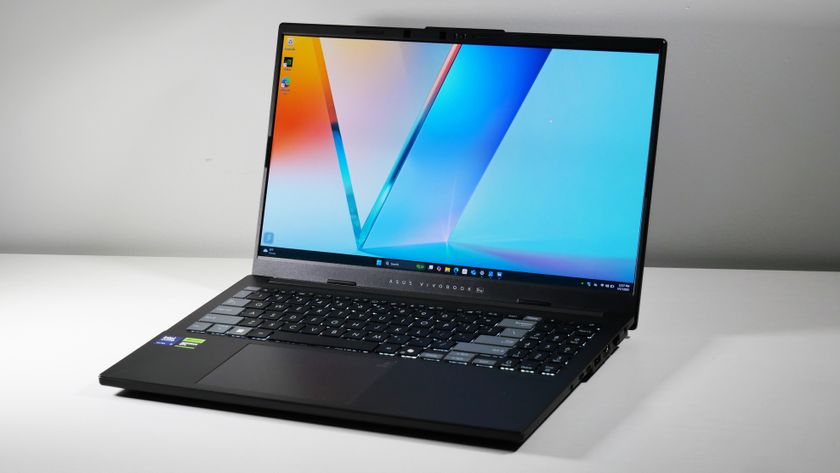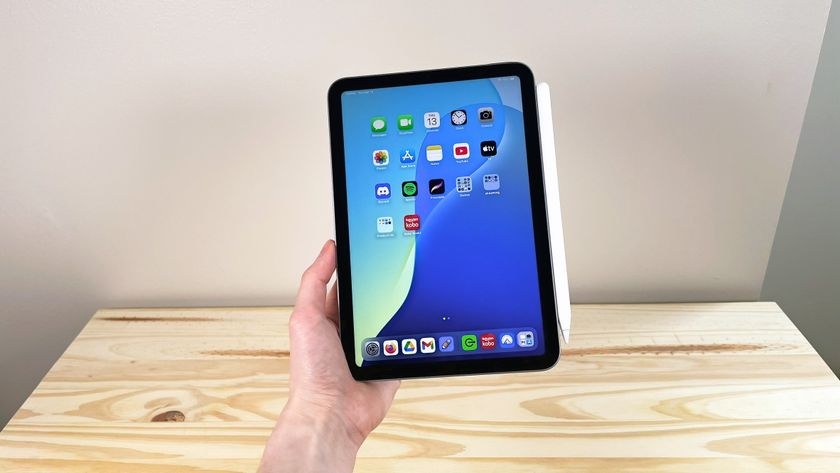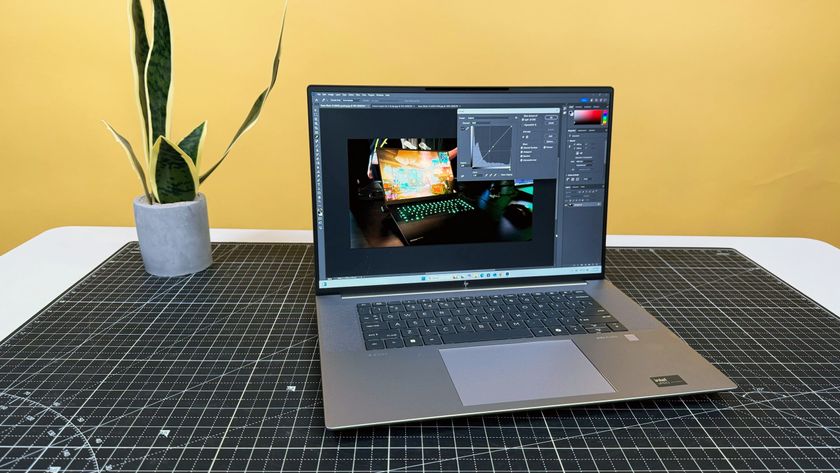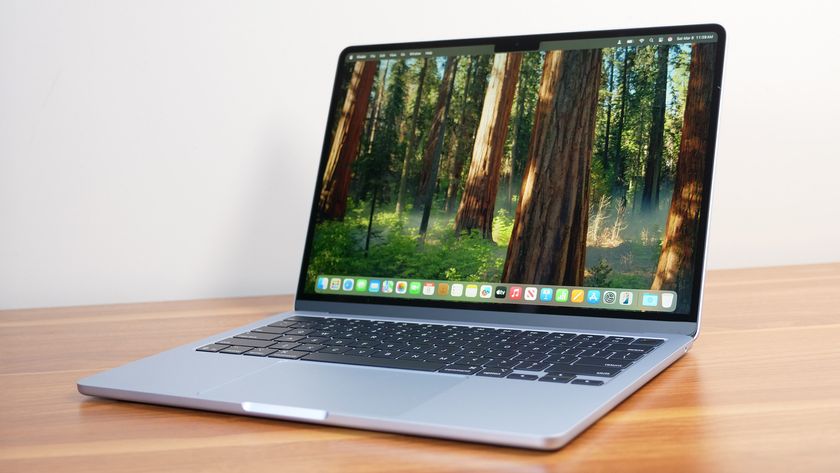Laptop Mag Verdict
The HTC First gives Facebook fans an attractive smartphone with an immersive social experience, but the camera could be better.
Pros
- +
Elegantly compact design
- +
Bright display with wide viewing angles
- +
Cover Feed is engaging and intuitive
- +
Chat Heads lets you message while using other apps
- +
Pure Android Jelly Bean under the hood
Cons
- -
Camera a bit slow and struggles in low light
- -
Lax default security settings
- -
No microSD Card slot
Why you can trust Laptop Mag
Sure, every Android phone is social, but you haven't seen one like this. The HTC First for AT&T is the first handset with Facebook Home preloaded, slick new software that graces your screen with a steady stream of friends' updates. See a photo of a delicious eclair someone shared? Just double tap the display to like it. You can also chat with Facebook friends even while you use other apps. However, Facebook Home is also available as a download for several Samsung and HTC phones. Does the First do enough on its own to make it worth $99?
[sc:video id="dod3A1cTqHfIS2iSa4asnpzATFoTPSCo" width="575" height="398"]
Design
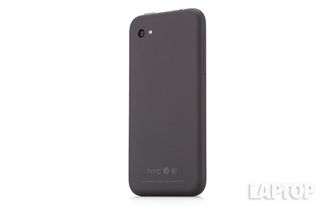
Click to EnlargeThink of the First as an anti-phablet. The 4.3-inch display on this phone is easy to operate with one hand, but plenty large for surfing the Web and flipping through full-screen status updates. Measuring 5 x 2.6 x 0.35 inches and weighing a mere 4.4 ounces, the First is wonderfully light and compact. The device weighs the same as the Motorola Droid Razr M for Verizon, but is a little thicker and taller.
Overall, we love the minimalist aesthetic of the First. The soft-touch black back is not only easy to grip, but looks refreshingly clean (with only small gray HTC, Facebook and AT&T logos decorating the bottom). Other color options include white, red and pale blue. Up front, the unified display and bezel create a seamless facade. A backlit circular home button, arrow-shaped back button and dashlike settings button sit beneath the screen.
The left side of the First houses two large volume buttons that are easy to press, while a microUSB port and the SIM card tray line the right side. Up top, you'll find the headphone jack and a raised power button that was easy to activate without looking. However, a couple of times the phone shut off when we sat down with it in our front jeans pocket.
MORE: 10 Most Stylish Smartphones
Display

Click to EnlargeYou would be hard-pressed to find a better-looking screen on a midrange Android phone. The First's 4.3-inch 720p Super LCD display is bright, boasts crazy-wide viewing angles and delivers rich colors. While watching "The Wolverine" trailer in high-def, we could make out drops of sweat on Hugh Jackman's forehead and appreciated the sheen on a large group of open umbrellas. The picture appears so close to the surface of the display that it seems to float above it, an important quality when you're trying to get users to like more of their friends' posted photos.
The First notched 404 lux when we hit it with our light meter, which is considerably higher than the smartphone average (299 lux), but below the Droid Razr M (449) and HTC One VX (471).
Audio
Click to EnlargeThe bottom-mounted speaker on the HTC First gets plenty loud, filling our kitchen with sound when we streamed Coldplay's "Fix You." Just as important, Chris Martin's vocals sounded warm and not tinny. The First's speaker also delivered loud and clear sound when we watched movie trailers and played games.
Facebook Home and Cover Feed
Click to EnlargeMore than an app, but not quite a full-fledged skin like HTC Sense or Samsung's TouchWiz, the HTC First puts Facebook in your face with Cover Feed. Once you've signed in with Facebook, you'll see News Feed updates start to populate your phone's lock screen and home screen. They will start cycling every 5 seconds but you can also swipe left or right to see what your friends are up to.
If someone shares a photo, it will dominate the screen with small text of the update up top and Like and Comment icons below. You can also double tap the display to like an update, after which you'll see a huge thumbs-up icon pop up to confirm your approval. We like the way photos automatically start panning, which is a neat effect.
Click to EnlargeBy default, Cover Feed doesn't display the time, signal strength or battery life, which we found annoying. Fortunately, you can toggle the Show Status Bar option in the Facebook Home Settings menu. Also, keep in mind that Cover Feed only displays updates from Facebook and Instagram. At least for now, other social services are off limits. BlinkFeed on the HTC One, for instance, lets you add Twitter and LinkedIn, as well as a wide range of news sources.
Click to EnlargeAt the bottom of the lock screen, you'll see your profile picture. Press it and three options will appear: Facebook Messenger to the right, Apps on top and the most recent app (designated by a back arrow) on the right. While we appreciate the simplicity of this interface, we wish Facebook Home offered the option to unlock straight to the camera. However, you can choose to switch out the Facebook lock screen for Google's, which has a camera option.
MORE: 5 Alternatives to Facebook Home for Android
App launcher and Jelly Bean
Click to EnlargeFacebook Home also includes its own app launcher, where you'll always find quick shortcuts running across the top for sharing your status, accessing photos and checking in to a location. Facebook understandably wants its own services front and center, but you can populate the launcher with any app you choose just by dragging it over from a larger app menu to the left of the launcher.
Just keep in mind that you can't create folders of apps on the launcher, which is a bummer. Widgets are also off the table when Facebook Home is on, since Cover Feed really plays that role.
Should you decide to turn Facebook Home off (an option in the Settings menu), you'll get the purest Android Jelly Bean (4.1.2) experience this side of a Nexus, complete with multiple home screens, widget support and much easier access to the Google Play store. The lock screen also will turn to Google's, with shortcuts for the camera and Google Now.
When Facebook Home is active, double pressing the Home button lets you switch between open apps, while long pressing launches Google Now.
Security and Privacy
Click to EnlargeThose who want to check news updates on the fly will appreciate Facebook Home's default security settings, but those concerned with their privacy will want to make a quick tweak. By default, anyone who picks up the device can access the Cover Feed and Like or comment on updates, even if you have a security pin or pattern enabled. Only once you try to open an app will you be hit with a unlock prompt.
Fortunately, you can uncheck "See Home When Screen Turns On" in settings, which will put the lock code prompt front and center whenever you attempt to use the First.
We ran into an issue during our testing of the First. When Facebook Home was set as the lock screen, we did not get an unlock prompt when trying to open applications. However, when we performed a fatory reset, we were not able to replicate the issue. We'll continue to investigate and update this review accordingly.
MORE: 21 Essential Social Privacy Tips
Notifications
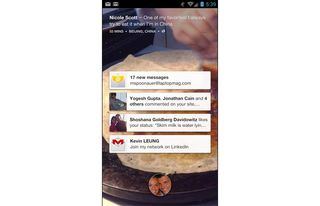
Click to EnlargeThe biggest difference between the Facebook Home download and the Facebook Home experience on HTC First is the way this phone handles notifications. Whereas the Home app only displays notification tiles from Facebook on your lock screen and home screen, the First gives the same treatment to any alert, whether it's Gmail, an updated app or a Twitter mention. Just tap a card twice to launch the app, or swipe it off the screen to dismiss it. Overall, this system worked well, and you still have the option of sliding down from the top of the screen to see notifications and access settings.
Chat Heads
Click to EnlargeLiterally changing the face of messaging, the Chat Heads feature of Facebook Home lets you send and receive messages on the HTC First while you use other apps. So, for example, if you're surfing the Web in Chrome and a text message or Facebook message comes in, a floating head will appear on the phone's display along with the message. If you tap the head, you'll be able to respond without switching apps.
Don't have time to respond right this second? Chat Heads will remain persistent as you move from one app to the other, and you can even move the head (or group of heads) around the screen to get them out of your way. Or you can simply drag the heads to an X at the bottom of the screen if you'd rather not be bothered.
Our one pet peeve with Chat Heads is that the head of our brother didn't automatically disappear after we had responded to a message. In other words, you have to tell Facebook Home when a conversation is over. If the heads become too much, you can disable the feature in settings.
Keyboard
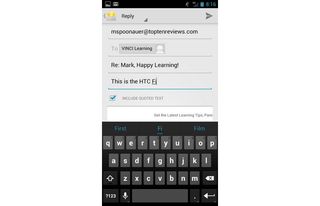
Click to EnlargeThe HTC First comes with a stock Android keyboard, which delivers moderate haptic feedback along with helpful suggestions just above the layout. You also can voice type at any time by pressing the microphone icon to the left of the space bar. The grayed-out numbers in the top row of letters are on the small side, but they were easy to activate with a long press.
Specs and performance
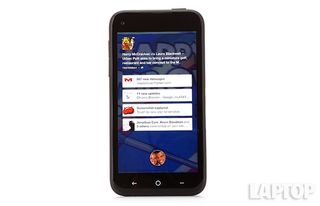
Click to EnlargeAs expected for a midrange Android phone, the First packs a dual-core processor, a 1.4-GHz Qualcomm 8930AA chip and 1GB of RAM. These components combined to notch a fairly high Quadrant score of 6,123, which measures CPU, graphics and I/O performance. This showing is well above the Android category average (3,761), the Motorola Droid Razr M (4,495) and the HTC One VX (5,333).
On An3DBench, which measures graphics performance, the First registered 7,407. That's slightly higher than the Razr M (7,335) and beats the One VX (7,042) by a wider margin.
In everyday use, the First proved responsive when we opened apps, but was not quite as speedy as quad-core devices like the HTC One. Still, this handset easily handled the demanding graphics of "Modern Combat 4 Zero Hour," even as dozens of enemies attacked our troop on a sandy beach. The billowing smoke and beams of gunfire set against palm trees were almost surreal.
4G and Data usage
Click to EnlargeThe First taps into AT&T's 4G LTE network, which covers 182 markets now and will reach 77 more by the summer. However, Verizon is still way ahead, with more than 440 markets. When we had a 4G LTE signal in New Jersey, most mobile sites (such as NYTimes.com and ESPN.com) loaded in a quick 4 to 5 seconds. The full desktop version of NYTimes.com loaded in just 7.5 seconds, while Laptopmag.com took 6 seconds.
Using the Speedtest.net app, the First pulled down a solid of 12.8 Mbps for downloads and a fairly good 4.2 Mbps for uploads in and around our New York office.
Over time, Facebook Home could eat into your AT&T data plan, which is why we're glad that the Settings menu lets you choose between low, medium and high settings for data use and image quality. After one day of testing the First phone on medium data use, Android's data-usage utility showed that Facebook Home had consumed 18MB. If you have AT&T's 1GB plan, the app could use more than 50 percent of your allotted data over the course of a month.
Camera
Click to EnlargeThose hoping for an HTC camera experience on the First will be disappointed. Unlike phones powered by Sense and with HTC's Image Chip, this handset's 5-MP shooter doesn't offer rapid-fire image capture. In fact, there was a noticeable lag both when taking shots and in between photos. We also don't like how the stock Android camera app takes up valuable real estate on the right side of the display, resulting in a somewhat cramped viewfinder.

Click to EnlargeThe photos themselves didn't wow, either. A shot we took of a New York corner delivered a fair amount of detail (including fairly sharp text on a sign that was more than 10 feet away), but the image had a slight haze. A photo of flowers we took indoors near a window popped with color, but the edges looked somewhat fuzzy. Be sure to use the flash in low light; the sensor inside the First isn't anywhere near as bright as the HTC One's Ultrapixel camera.
The stock Android camera app on the First is fairly barebones compared with HTC's on other phones. You can adjust the flash, white balance, exposure and scene mode, as well as shoot panoramas, but that's pretty much it. You won't find special effects or a burst mode.
A 720p video we captured of New York traffic didn't impress. While the footage looked bright and we could make out the letters on a passing taxi ad, the video stuttered a few times.
[sc:video id="13ODFncTrggAkcFJLqP2CEw_VeKDhCzh" width="575" height="398"]
Facebook's preloaded Facebook app is a mixed bag. We like how easy it is to upload and add a comment for multiple images at once, but we grew tired of the invitation to tag every image. Plus, the view of each image is smaller than Google's Gallery app, and you can't pinch to zoom.
Apps
The First comes delightfully free of carrier bloatware, with only AT&T Visual Voicemail populating the launcher. As you might expect, you'll find Facebook Messenger, Facebook app and Messenger on the launcher, too. As with any other Android phone, you can download any app you want from the Google Play store. Facebook doesn't include its own app store, which is fine by us.
Battery Life
The 2,000-mAh battery inside the HTC First delivered fair battery life, lasting 6 hours and 16 minutes on the LAPTOP Battery Test. That runtime is a bit higher than the average, but about 45 minutes behind such competing phones as the HTC One VX (6:58) and Droid Razr M (6:56).
Verdict

Click to EnlargeAs the first vehicle for the Facebook Home experience, the HTC First is a pretty good initial effort. We like the streamlined, soft-touch design and vibrant display, which gives all those social updates a gorgeous canvas. And while we'd like to see Facebook be more inclusive of other social networks and news services for its Cover Feed, it is well-designed and easy to use. The Chat Head feature is another welcome innovation, because your messages can follow you from app to app.
Ironically, although the First does "fork" Android, this phone could very well satisfy Android purists on a budget. That's because if you disable Facebook Home, you get a very clean installation of Jelly Bean with no carrier meddling. However, we miss some of HTC's own Sense tweaks here, especially when it comes to the less-than-stellar camera.
Even though it doesn't support as many types of notifications, we believe most users will be content to download the Facebook Home app to existing Android devices. But if you're looking for an attractive and affordable smartphone that puts Facebook first, the HTC First is definitely worth a look.
HTC First (AT&T) Specs
| Bluetooth Type | Bluetooth 4.0 |
| Brand | HTC |
| CPU | Dual-core 1.4-GHz Qualcomm MSM8930 Snapdragon 400 |
| Camera Resolution | 5 MP |
| Carrier | AT&T |
| Company Website | http://www.att.com/ |
| Data | GSM, LTE, HSDPA |
| Display (main) | 4.3-inches |
| Display Resolution | 1280x720 |
| Form Factor | Candybar Touchscreen |
| Front Camera Resolution | 1.6MP |
| GPS | Yes |
| Internal Memory | 16GB |
| OS Family | Android |
| Operating System | Android 4.1 |
| Phone Display Size | 4.3 |
| Ports | microUSB, 3.5mm headphone |
| Processor Family | Qualcomm Snapdragon 400 |
| RAM | 1GB |
| Size | 5.0 x 2.6 x 0.4 inches |
| Weight | 4.3 oz |
| Wi-Fi | 802.11 a/b/g/n |

